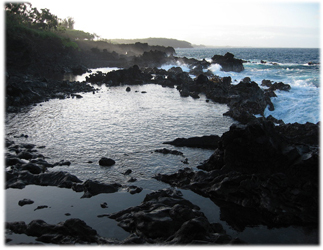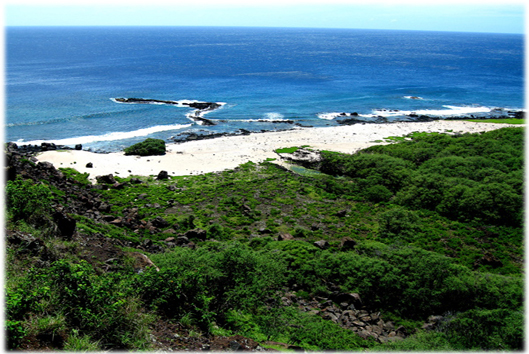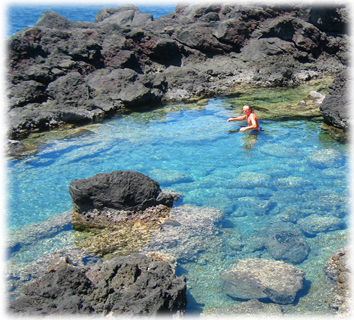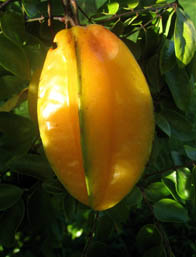







Other possibilities include converting the barn (which has 1,760 square feet of open floor plan) into a yoga studio, art studio or other creative space. What you do with this land is limited only by your creativity and ingenuity. Come take a look at it, and let your imagination flow.






The possibilites for this land are endless. It contains orchards, gardens, a wooded area and grassland. The area at the top of the hill could become a house site with 180 degree ocean views from the second floor. The current cane grass area could be turned into pasture for horses or dairy animals, or harvested as horse feed (bales of hay cost over $35 in Hawaii, because it is all imported, but this land has a large supply of fresh, high nutrient horse feed, which could be baled and sold). This same cane grass is in high demand for the new biomass plant on the island which is producing biodiesel fuel, but it has higher value as horse food. There are several Arabian horse farms in the neighborhood, and many other horse farms in Waimea, on the western side of the island, so there is a ready market. The five acre cane grass area could also be planted as more orchards and gardens, or mowed repeatedly, which turns the cane grass into lawn. The area that is in young melleluca trees could be cleared, or could remain to grow into a shade crop area/natural woods. The orchards that have already been planted are beginning to mature, with some of the trees already bearing fruit, and others with several years yet before they begin a good harvest. The long term trees (durian and mangosteen) will not bear fruit for another 5-7 years, but they are high value crops that sell for more than $15 per pound. They have hard outer rinds that allow them to be transported without injury. Cacao is another tree with a high value crop. Organic cocoa beans sell for about $25 a pound, and it has a hard outer pod that makes it easy to transport. We have around 50 cacao trees at present that will be coming into fruit within about 3 years. The 3,000 square foot raised bed garden area already puts out ample crops. This area could be expanded to create more short term income (vegetables grow very fast, and the resorts, restaurants and natural food stores all want organic produce). A greenhouse would be a big money maker, since certain vegetables cannot be grown in the tropics without it and command a high market price because they are almost all imported from outside of Hawaii. For example, organic yellow peppers retail for $8 per pound, organic heirloom tomatoes for $6 per pound, and a small green house containing 275 tomato bushes and 50 pepper plants would yield about $40,000 of crop (at wholesale prices) over a six month period. These profits could well increase as the price of fuel to import produce continues to rise, making their value go up. The orchid room that currently exists is small and only for pleasure, but the climate is ideal for orchid culture and this could be developed further. There are many profitable orchid farms in the area. Coffee grows quite well here and matures rapidly (although we have not planted any), and organically grown family farm coffee is another high value crop, selling from $15 to $30 per pound. It also ships well. We have been committed to the permaculture style of agriculture with mixed orchards (we have about 50 types of fruit trees now), but there is no reason you couldn’t grow one particular crop if you wanted to. It could be sun loving or shade loving, since the shade forest will be ready to plant under within a year, and the five acres of cane grass could be converted to sun loving crops immediately.